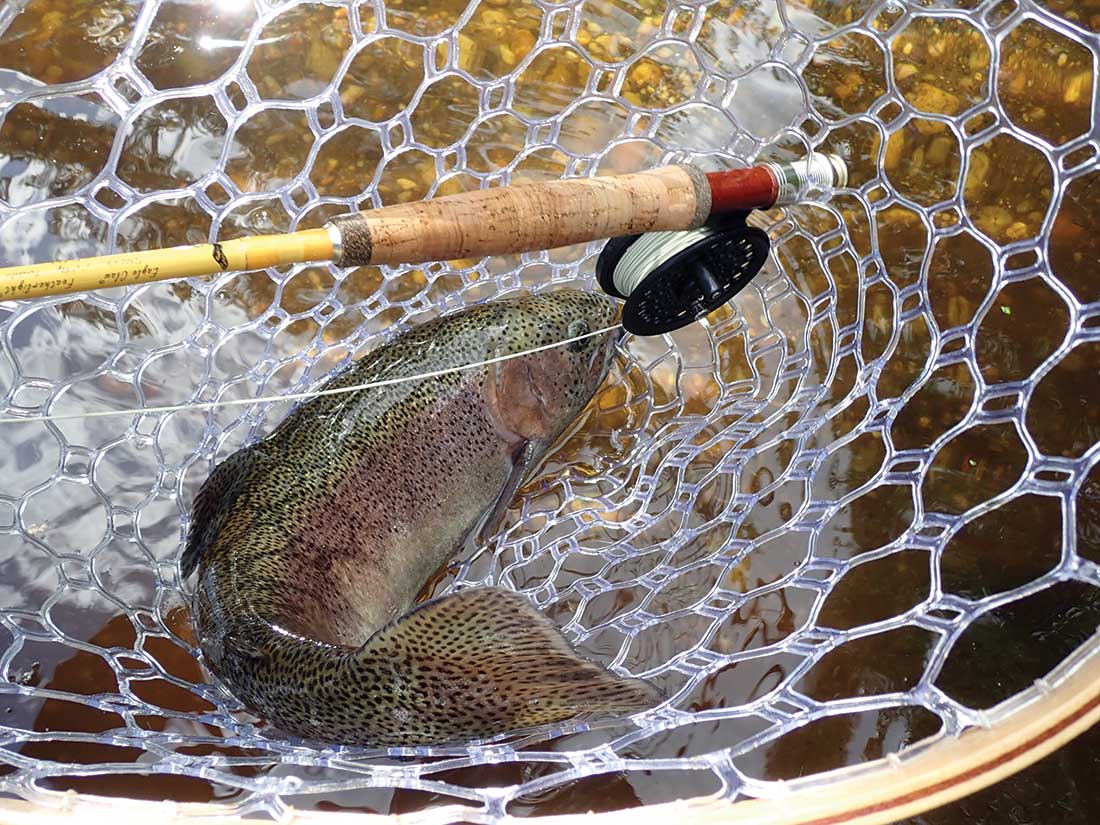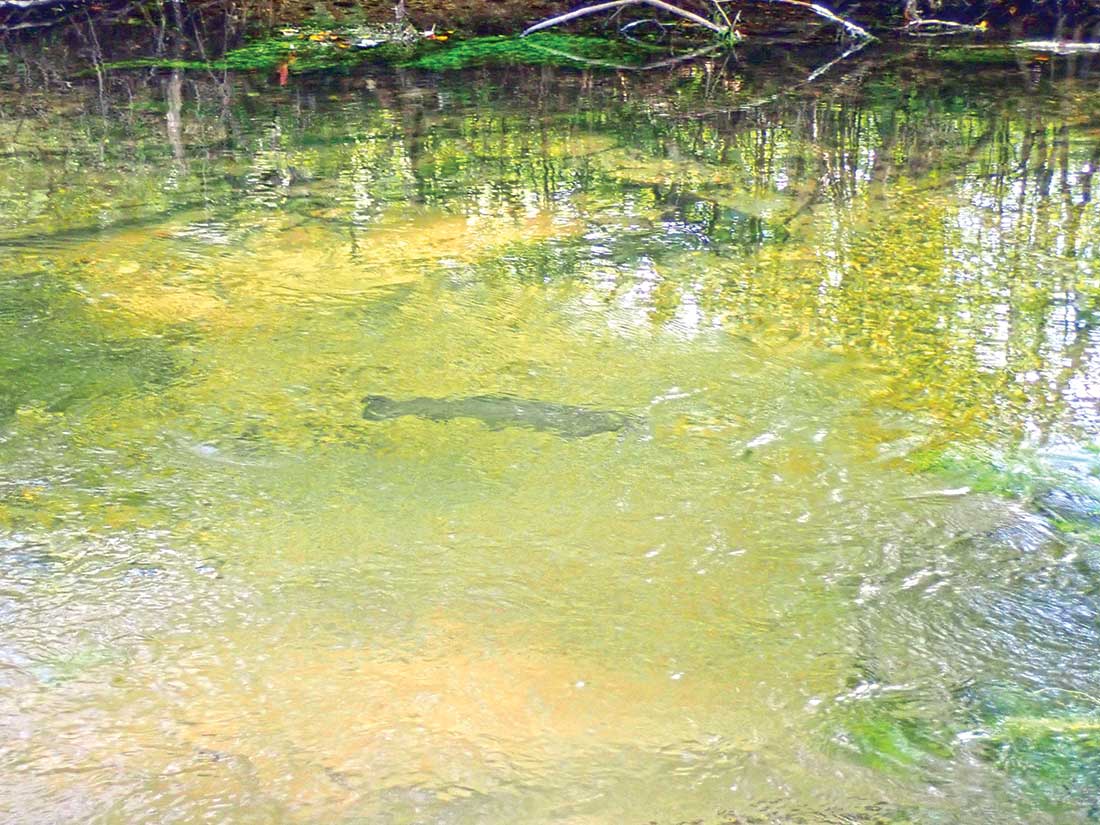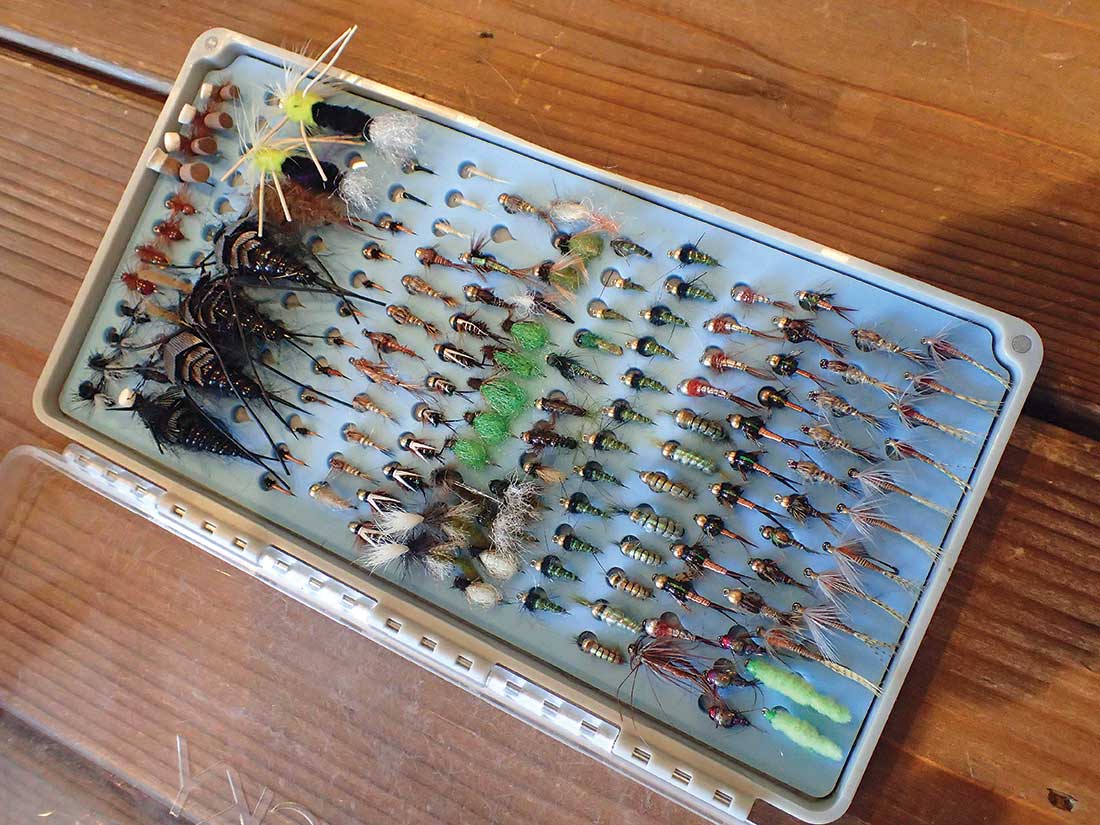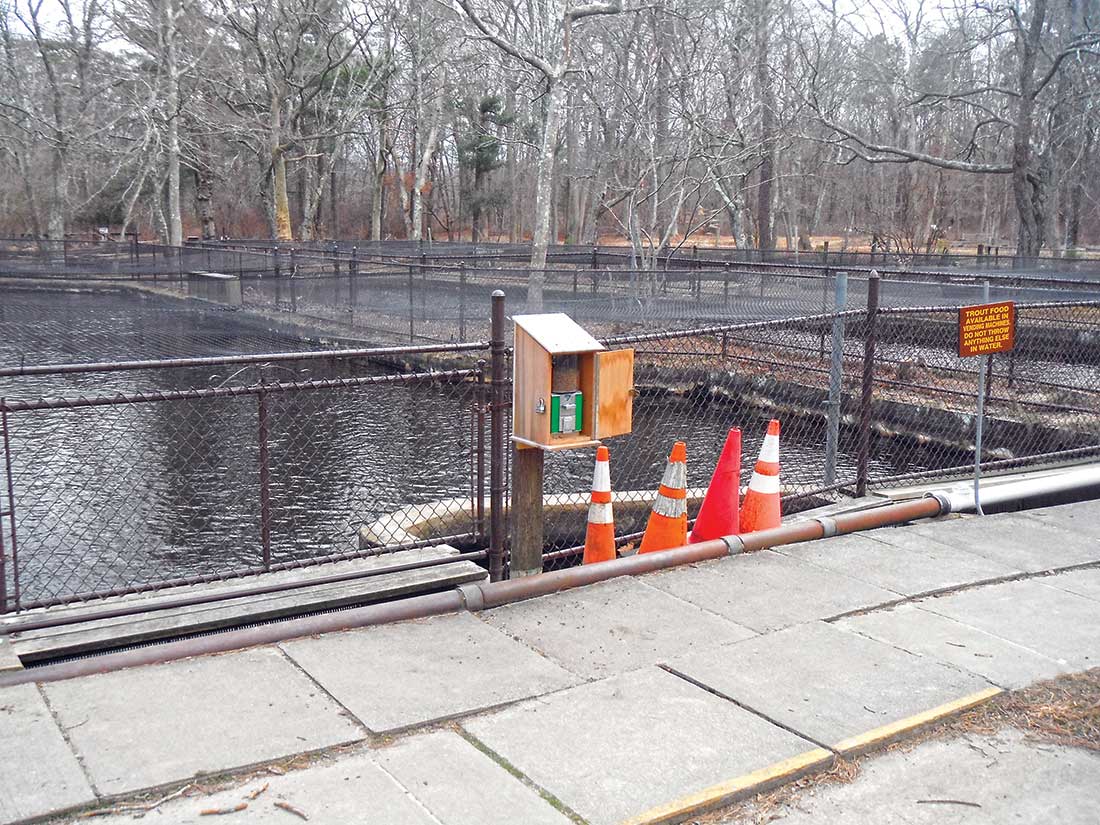
Despite being located on one of the most densely populated islands in the country, the Connetquot is recognized by the state as a Wild, Scenic Recreational River.
Located only 40 miles from Manhattan, Connetquot River State Park Preserve began life as a game reserve for New York City’s wealthy elite – replete with its own hatchery. In 1963, The South Side Sportsmen’s Club was sold to New York State for the princely sum of 6.2 million dollars. Not wanting to completely relinquish control yet, they leased the lands back for the next decade.
Starting in August of 1973, the grounds officially became a New York State Park, and were opened to the public for the first time. Park and state officials noted how unspoiled this land was in contrast to the development that had engulfed most of Long Island, and the New York State Legislature designated it a State Park Preserve on August 7, 1978 to provide continued protection for generations to come.
Once word got out about the gigantic rainbows and browns swimming in the spring creek, the Park drew crowds from all over the United States and abroad. Anglers would often sleep in their cars just to get a chance at scoring one of the more coveted beats on the first come, first served public water. It was not unheard of to catch six or seven large fish within the span of an hour, and double-digit trout merited no special mention.
The on-site hatchery was responsible for the absurd number of fish present. The first hatchery was opened in 1870, and since that time moved locations twice until settling in its current location – mere feet from the river itself, where it has remained for over 100 years. Because of the technologies of the time, and ease of construction, the hatch house used water diverted from the river. Brood stock and juveniles alike were kept in pens that were nothing more than offshoots of the river. Thousands of trout were stocked each year, with fly fishing only and strict regulations in place ensuring the population remained elevated.
In the early 2000s, Infectious Pancreatic Necrosis (IPN), a disease common to farmed fish in certain regions, broke out in the centuries-old hatchery. While this disease may have been common in other areas, it was the first time it had struck any New York state hatchery, public or private. Because the hatchery drew and discharged water back into the river, production was ceased to stop the spread of this disease into the waterway. New York law prohibited the stocking of IPN-positive fish into any waters in the state after December 31, 2008; all of the fish in the hatchery were released to the river in the fall of 2008.
The NYS Department of Environmental Conservation monitored the waterway for continued signs of the disease. With no signs of IPN recorded since 2009, plans were made to reopen the hatchery without use of the river’s water to eliminate the potential of spreading disease into the wild. Two groups of concerned anglers, the Idle Hour Fishing Club and Friends of the Connetquot, raised money and obtained grants to facilitate the installation of a well with flow sufficient to handle the demands of an aquaculture operation, and the infrastructure to retrofit it to the existing facility.

With the well drilled and water flowing to the hatch house, the river is once again teeming with fish. The hatchery aims to produce more than 30,000 trout over 12 inches long every year, to be deposited in not only the Connetquot River but other Long Island–area parks as well. While the state footed the bill in previous years, the operation will rely largely on private funding for eggs and fish food. The Idle Hour Fly Fishers and Friends of the Connetquot play a large role in the hatchery’s continued operation.
I recently returned to fish the park for the first time in a decade, and was amazed at what I saw. Nearly every pool held multiple rainbows, almost all of bragging size. Not expecting fish of this magnitude, I had taken my son’s fiberglass 3-weight with me, which spent the majority of the four hour session bent to the cork. With the rod doubled over, I couldn’t help but get a little giddy every time an 18-inch ‘bow went airborne.
Despite being located on one of the most densely populated islands in the United States, the Connetquot is recognized by the state as a Wild, Scenic Recreational River. The headwaters begin as a small spring, known as Connetquot Brook, just south of the Long Island Expressway. As the river flows southward it gains width, and becomes the Connetquot River. The lower reaches are estuarine in nature, and water levels are influenced by the tides. Fish do make it to the lower reaches, and catching a “salter” that has spent a season or two in the brine is not unheard of.

Though the river can be fished along much of its length, access is easiest in the Connetquot River State Park Preserve. The fishing tends to be most consistent here, likely due to the proximity of the hatchery. To keep the river from becoming a combat fishing zone, beats are assigned to each angler. These 30 sections allow you to wander about on your own, giving you plenty of space. This comes at a cost, with each four-hour session carrying a $25 fee. Two sessions are available each day the park is open to fishing, Tuesday through Sunday, 8 am to 12 pm and 12 pm to 4 pm. You may make reservations up to a week in advance by calling the park office at 631-581-1005.
Many beats have casting platforms placed over the water, so you don’t need to get in the water if you don’t want to, though you’d be severely limiting the ground you can cover. Wading is easy, as the river has a firm, sandy bottom. In years past you were limited to hip boots, but those regulations have since been lifted. Felt soles are prohibited in the park, so be sure to leave those at home. Breathable stocking foot waders combined with a sturdy rubber-soled boot will be the most comfortable in all but the coldest conditions. Several handicap accessible beats are available for those with mobility issues.
Angling is limited to fly fishing equipment by park rule, but the required tackle need not be fancy. Casts aren’t very long or technical; so don’t worry if you’re not Lefty Kreh. A 4-to 6-weight rod around 7 feet long is ideal, but longer or shorter will work. I prefer a fiberglass rod as I find they load well with little line out past the tiptop and give me a gentler presentation than my faster action rods, but this is a matter of personal preference. The river is shallow, so a floating line will cover all techniques. Select a 9-foot or longer leader in 4 or 5x for dry flies, but you can get away with shorter and heavier for nymphs. If you need assistance with tackle selection, visit Riverbay Outfitters (riverbayoutfitters.com, 516-415-7748) in Baldwin and they will get you set up.
As a spring creek, the average temperature is about 52 degrees. This means that the fishing is pretty consistent no matter the season, though it will slow in the dog days of summer. The shoulder periods of spring and fall are typically the most productive, as the changing temperatures and photoperiods encourage the trout to feed heavily. On colder days opt for the afternoon session so the sun’s rays can kick start the fish a bit.
These days, the river is stocked with rainbow and brook trout, though the flies used to fool each are the same. In the coldest months, fly selection is limited to subsurface patterns such as streamers and nymphs, but as the mercury begins to climb you will encounter fishable hatches. All of the common aquatic insects in the Northeast are found here, so the flies you’d use on a Catskill creek will work just fine. Baitfish in the river are mostly darters, and can be imitated with Woolly Buggers or more traditional patterns such as the Black or Grey Ghost.

Midge nymphs in sizes 20 to 28 are a solid bet year round, as are scud patterns. In the warmer months fish these in a dry/dropper rig to make detecting subtle bites easier. From March to October, you can expect to see tricos coming off the water. Though these hatches happen fairly regularly, they can be tough to fish because of the small nature of these insects. The blue wing olive hatches that occur from mid-April through October are excellent, and are quite enjoyable to fish. The caddis hatch is also worth mentioning, and can happen at any time from April through September. Keep a selection of nymphs and dries for these insects handy and you’ll be covered for all conditions. Just remember that whatever fly you choose, it must be barbless.
Though catch and release is encouraged, there is a two trout limit. Anglers may keep two fish ranging in size from 10 to 13 inches, though you must cease fishing when you add that second fish to your bag. Grab your fly rod and head down to Connetquot River State Park Preserve on the next nice day. You’ll enjoy a landscape not typically found on Long Island, while catching a few fish in the process.


